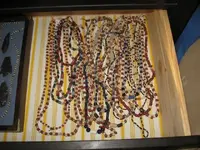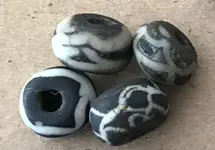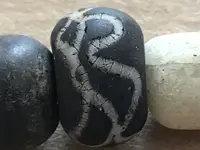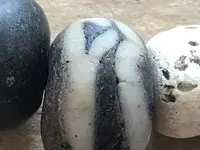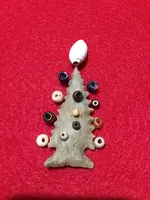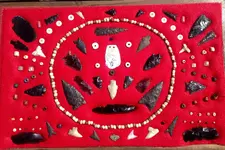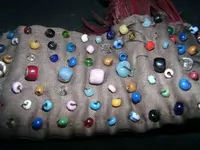OntarioArch
Sr. Member
- Joined
- Nov 26, 2017
- Messages
- 425
- Reaction score
- 1,145
- Golden Thread
- 0
- Location
- Cayuga County NY
- Primary Interest:
- Relic Hunting
How are we to discuss Glass Trade Beads when their names are so variable? Some Common Names from recent discussion boards and auctions include:
Roman Inlaid, Flush Eye, Rattlesnake, Blue Stars, Blue Football, Redwoods, Red Straw, Bumblebee, Skunk Eye, Tac, Russian Blue, Pony Beads.
They are often simply named by Size, Shape, and/or Color: white seed; round; oval; faceted; football; chevron; polychrome, straw, black with red stripes; tubular, conical, cane, white cane, red straw, black tubular, etc.
I believe these four names have been used to refer to the same bead:
‘brick red with green center’
‘redwood with green center’
‘multilayered Venetian bead: cornaline d’Aleppo’
[from Kidd/Karlin taxonomic system] "IVa6 (YF-146). Circular; op. brick red (7.5R 3/8) exterior; tsp. apple green (10GY 6/6) core; late 18th/19th centuries."
A complicated area of NA collecting, for sure. Here are a few glass trade beads I have not shown here before.
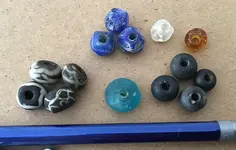
Roman Inlaid, Flush Eye, Rattlesnake, Blue Stars, Blue Football, Redwoods, Red Straw, Bumblebee, Skunk Eye, Tac, Russian Blue, Pony Beads.
They are often simply named by Size, Shape, and/or Color: white seed; round; oval; faceted; football; chevron; polychrome, straw, black with red stripes; tubular, conical, cane, white cane, red straw, black tubular, etc.
I believe these four names have been used to refer to the same bead:
‘brick red with green center’
‘redwood with green center’
‘multilayered Venetian bead: cornaline d’Aleppo’
[from Kidd/Karlin taxonomic system] "IVa6 (YF-146). Circular; op. brick red (7.5R 3/8) exterior; tsp. apple green (10GY 6/6) core; late 18th/19th centuries."
A complicated area of NA collecting, for sure. Here are a few glass trade beads I have not shown here before.

Last edited:
Upvote
0



